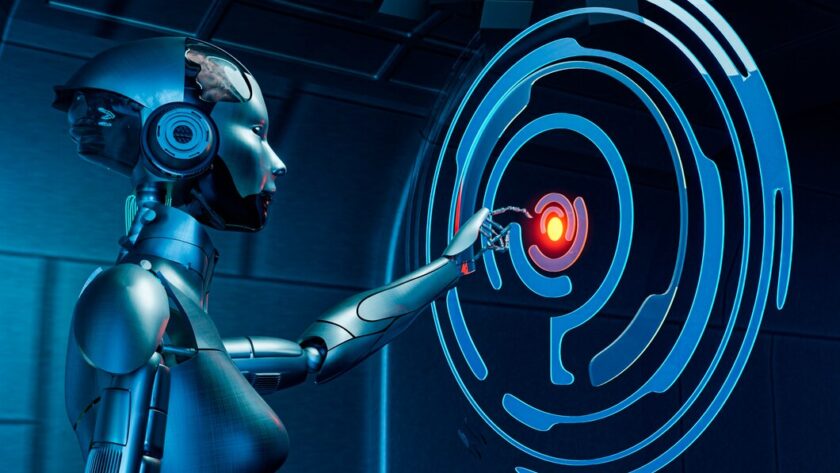The allure of automated, potentially profitable trades has drawn many towards robot trading. However, the reality of robot trading’s profitability is often shrouded in speculation and conflicting claims. This article aims to provide a balanced perspective, exploring the potential benefits and drawbacks of robot trading, examining factors influencing its profitability, and offering insights for informed decision-making.
Understanding Robot Trading
Robot trading, also known as algorithmic or automated trading, is a transformative approach that leverages computer programs to execute trades in financial markets. At its core, this method relies on predefined criteria and mathematical models, empowering traders with the ability to automate and streamline their trading strategies. This automation significantly reduces the time and effort required for market analysis and order execution, marking a departure from traditional manual trading.
The concept of robot trading extends beyond mere efficiency. It involves the meticulous crafting of algorithms that dictate when and how trades should be executed based on various market conditions. This approach not only enables rapid decision-making but also eliminates the influence of human emotions in trading. Emotions like fear and greed, inherent in manual trading, can lead to impulsive decisions that may adversely impact financial outcomes. With robot trading, the emotional factor is eradicated, promoting disciplined and consistent trading strategies.
Advantages of robot trading extend to the realm of risk management. The automated nature of these systems allows for diversification across various assets and markets simultaneously. Traders can engage in multiple transactions without being limited by the constraints faced in manual trading. This not only enhances the potential for profit but also helps mitigate risks by spreading investments across different avenues. In essence, understanding robot trading involves recognizing it as a sophisticated, automated solution that not only optimizes efficiency but also introduces a strategic and disciplined approach to navigating financial markets.
The Profitability Debate
In delving into the profitability debate surrounding robot trading, a crucial aspect to consider is the historical performance of automated trading strategies. Analyzing past results provides invaluable insights into the potential outcomes of employing robot trading in various market conditions. Historical data allows traders to assess the effectiveness of specific algorithms and strategies over time, identifying patterns and trends. While historical performance can serve as a guide, it’s essential to approach it with a critical eye, recognizing that past success doesn’t guarantee future results. This analysis becomes a cornerstone for traders seeking to understand the reliability and consistency of robot trading strategies.
Factors Influencing Profitability
Beyond historical performance, the profitability of robot trading is intricately tied to a myriad of influencing factors. Market volatility, liquidity, and the chosen trading strategy all play pivotal roles in determining the success of automated trading systems. Understanding how these factors interact is essential for traders to make informed decisions. Economic events, geopolitical developments, and technological advancements can significantly impact the profitability of robot trading. Navigating the dynamic landscape of financial markets requires a nuanced understanding of these influencing factors, allowing traders to adapt their strategies in response to changing conditions. In essence, the profitability debate hinges on a comprehensive analysis of both historical performance and the multifaceted factors shaping the financial landscape.
Pros and Cons of Robot Trading
Robot trading, like any trading approach, comes with its own set of advantages and challenges. Understanding these factors is pivotal for traders considering the adoption of automated systems. Below, we delve into the pros and cons of robot trading, shedding light on the benefits that can enhance trading experiences, as well as the challenges that necessitate careful consideration.
Advantages of Robot Trading
- Speed and Efficiency: Swift execution of trades in milliseconds, capitalizing on market opportunities before manual traders can react.
- Elimination of Emotions: Removal of emotional biases, preventing decisions influenced by fear or greed, thereby enhancing discipline and consistency in trading.
- Diversification Opportunities: Simultaneous trading of multiple assets and markets, providing diversification that may be challenging for human traders to achieve.
Disadvantages of Robot Trading
- Technical Challenges: Setting up and maintaining a robot trading system requires technical expertise, and traders must continuously update and monitor the algorithms.
- Market Dependency: Robot trading systems heavily depend on market conditions, and sudden shifts or anomalies can lead to unexpected outcomes.
- Initial Setup Costs: Implementation of a robot trading strategy may involve initial costs for software, hardware, and data feeds.
This nuanced exploration aims to equip traders with a comprehensive understanding of the intricacies involved in robot trading, aiding them in making well-informed decisions aligned with their financial goals and risk tolerance.
Choosing the Right Robot Trading Strategy
When venturing into robot trading, selecting the right strategy is paramount. Trend-following strategies are popular choices among traders, and here’s why:
- Identification of Market Trends: These strategies excel in identifying and capitalizing on prevailing market trends, aiming to ride the momentum for optimal gains.
- Emphasis on Market Momentum: By emphasizing momentum, trend-following strategies align with the principle that existing trends are likely to continue.
Mean-Reversion Strategies
For those seeking an alternative approach, mean-reversion strategies offer a distinct perspective:
- Reversion to Historical Averages: Mean-reversion strategies operate on the assumption that asset prices tend to revert to their historical average over time.
- Countering Market Extremes: These strategies trigger trades when the market reaches extremes, anticipating a return to more typical price levels.
Risk Management Considerations
Regardless of the chosen strategy, effective risk management is crucial for sustained success:
- Clear Risk Parameters: Establishing clear risk parameters is essential. Traders should define acceptable levels of risk and align their strategies accordingly.
- Continuous Monitoring and Adjustment: Successful robot trading involves continuous monitoring of market conditions and the flexibility to adjust strategies as needed.
In the realm of robot trading, the strategy chosen becomes the guiding force behind trading decisions. Whether opting for trend-following or mean-reversion approaches, the key lies in aligning the strategy with personal preferences, risk tolerance, and the prevailing market conditions.
Common Misconceptions About Robot Trading
| Misconception | Explanation | Reality |
| Robot Trading Guarantees Profits | Many believe that robot trading ensures consistent profits without any losses. | In reality, robot trading, like any other form of trading, carries inherent risks, and profits are not guaranteed. Market conditions, strategy effectiveness, and other factors influence outcomes. |
| Robot Traders Can’t Lose | Some perceive robot traders as infallible, incapable of making losses. | In truth, robot traders are subject to market fluctuations and can incur losses, especially during volatile periods or when strategies are not appropriately configured. |
| Robot Trading is Fully Autonomous | There’s a misconception that robot trading operates independently without human intervention. | The reality is that while robot trading automates execution, human oversight is necessary for strategy development, optimization, and risk management. |
- Robot Trading Guarantees Profits: Many believe that robot trading ensures consistent profits without any losses. In reality, robot trading, like any other form of trading, carries inherent risks, and profits are not guaranteed. Market conditions, strategy effectiveness, and other factors influence outcomes.
- Robot Traders Can’t Lose: Some perceive robot traders as infallible, incapable of making losses. In truth, robot traders are subject to market fluctuations and can incur losses, especially during volatile periods or when strategies are not appropriately configured.
- Robot Trading is Fully Autonomous: There’s a misconception that robot trading operates independently without human intervention. The reality is that while robot trading automates execution, human oversight is necessary for strategy development, optimization, and risk management.
By dispelling common misconceptions and providing a clear understanding of the realities of robot trading, traders can make informed decisions and navigate the financial markets more effectively.

